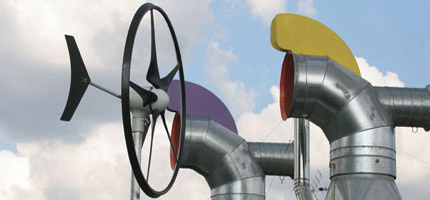
While the government dithers over its energy policy, companies, councils and organisations are taking matters into their own hands. By generating their own clean and efficient energy, they're not only reducing their carbon emmissions but also improving their own security of supply. If your organisation is thinking of doing the same, these case studies may help show you the way. Contact details are provided at the end of each case study to find out more - and, of course, make sure you watch our films on the subject: The Convenient Solution and What Are We Waiting For?
Scottish & Newcastle Royal Brewery, Manchester
Scottish & Newcastle is installing a combined heat and power (CHP) plant in their Manchester brewery, which will be fuelled entirely by biomass - partly from spent grain produced in the brewing process. The brewery will also have a biogas CHP plant, using biogas from pressed water which is also produced in the brewing process. Because the scheme will reduce the brewery's emissions from fossil fuels by 87 per cent and improve security of supply for heat and electricity, Scottish & Newcastle have now decided to roll out the model to their other breweries.
Southampton district energy scheme is one of the largest commercially developed community heating and cooling networks in the UK. The district heating network uses heat pumped from a geothermal borehole, several combined heat and power (CHP) engines, backup boilers, absorption chillers and backup vapour compression machines. The scheme now serves thousands of customers - including residential properties, office buildings, hotels, a hospital and a university.
Manchester City is going to power their SportCity complex with on-site renewable energy, generated through an 85-metre tall wind turbine. Not only will it reduce the club's carbon dioxide emissions by 3500 tonnes per year, it will also allow them to feed excess electricity back to the local grid to be used by local homes or businesses, making Manchester City the greenest football club in the UK.
Green Park's 85 metre turbine on the outskirts of Reading is one of the most seen in Britain; every year millions of motorists see it from the nearby M4. The wind turbine, which supplies the many large businesses in the Green Park commercial estate and over 1000 homes, is one of the very few truly urban wind turbines in the country.
Woking Borough Council is at the forefront of the decentralised energy revolution in the UK. By decentralising its energy, Woking Council has slashed its energy use by nearly half, and its CO2 emissions by a massive 77 per cent since 1990. It has pioneered the development of a network of over 60 local generators, including cogeneration and tri-generation plant, photovoltaic arrays and a hydrogen fuel cell station, to power, heat and cool municipal buildings and social housing. Many town centre businesses are also connected to this local energy supply.
Find out more:


